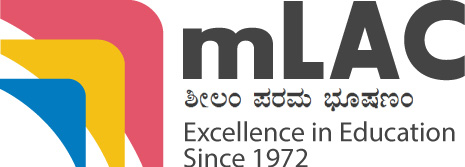NAAC is an acronym for the NATIONAL ASSESSMENT AND ACCREDITATION COUNCIL , which is responsible for assessing and accrediting Higher Educational Institutions (HEIs) such as colleges, universities, and other recognized institutions. The Council aims to evaluate the institution's 'Quality Status' by considering various aspects, including educational processes, curriculum coverage, teaching-learning methods, faculty, research, infrastructure, learning resources, organization, governance, financial well-being, and student services.
NAAC's vision is to establish quality as the defining characteristic of higher education in India through a blend of internal and external quality evaluation, as well as promotional and sustaining initiatives. The Council's mission is to conduct regular assessments and accreditations of higher education institutions, their units, specific academic programs, or projects; foster an academic environment that promotes the quality of teaching, learning, and research in higher education institutions; encourage self-evaluation, accountability, autonomy, and innovation in higher education; undertake research studies, consultancy, and training programs related to quality; and collaborate with other stakeholders in higher education for the evaluation, promotion, and sustainability of quality.
NAAC's value framework aims to instill the following core values among Higher Educational Institutions (HEIs) in the country: Contributing to National Development, Fostering Global Competencies among Students, Inculcating a Value System among Students, Promoting the Use of Technology, and Quest for Excellence.
Assessment Criteria
NAAC has established the following seven criteria to serve as a basis for its assessment procedures
1. Curricular Aspects
2. Teaching-Learning and Evaluation
3. Research, Consultancy, and Extension
4. Infrastructure and Learning Resources
5. Student Support and Progression
6. Governance, Leadership and Management
7. Innovations and Best Practices
Key Indicators (KIs) are identified under each Criterion. These KIs are then further broken down into Metrics that elicit responses from HEIs.
Grading
Institutions are evaluated based on four categories, namely, A, B, C, and D, indicating Very good, Good, Satisfactory, and Unsatisfactory levels, respectively, for each Key Aspect. The score for each Key Aspect under a Criterion is then added with the appropriate weightage applied to it. The GPA is calculated for each Criterion based on the total score of all the Key Aspects. The final Assessment Outcome is determined by the Cumulative GPA (CGPA), which is calculated from the seven GPAs of the seven criteria, after applying the prescribed weightage to each Criterion.
For more information please visit: http://naac.gov.in/index.php/en/
